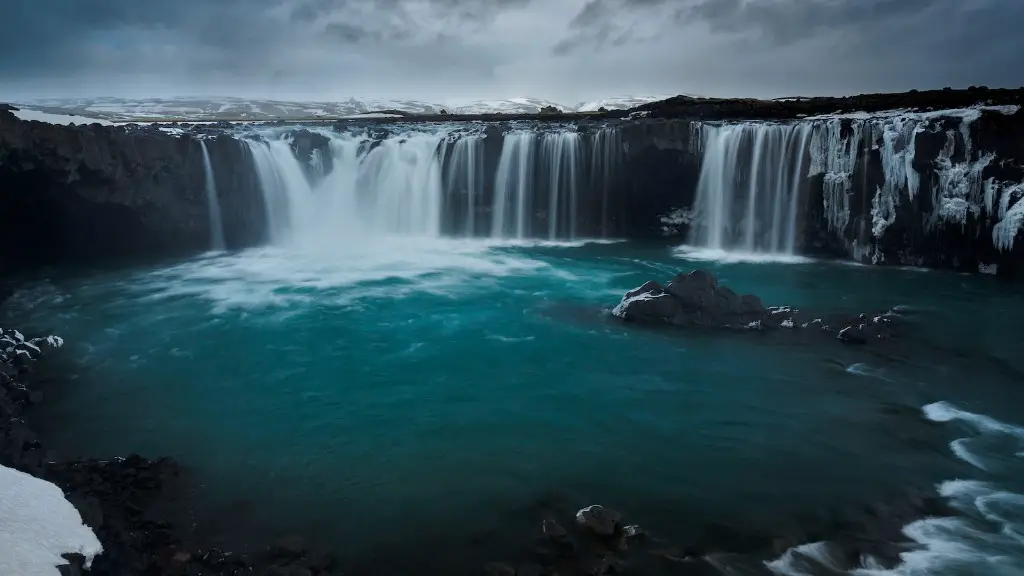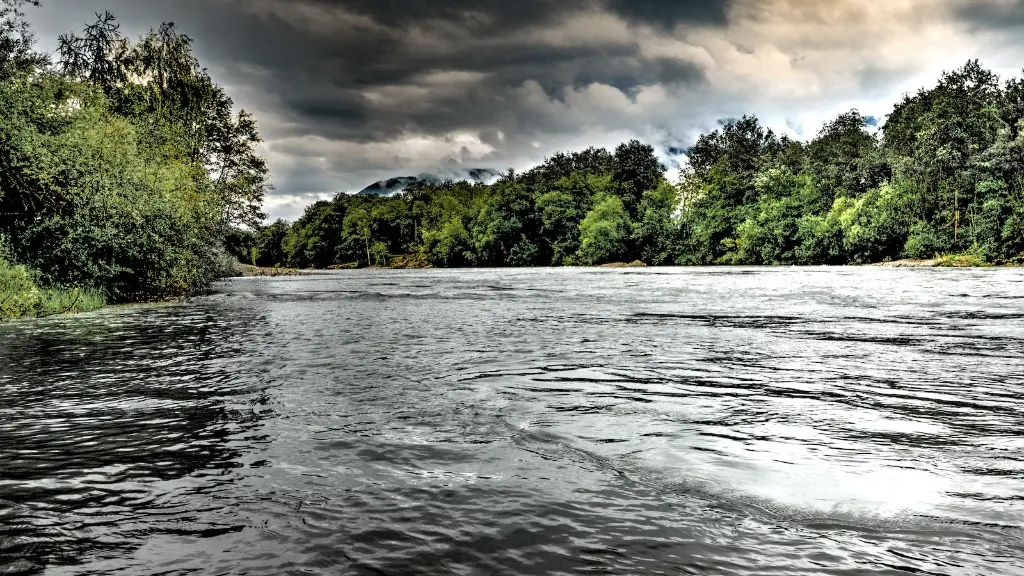The Yangtze River is the longest river in China and the third-longest in the world. Starting at Qinghai Lake in the western part of the country, the Yangtze winds its way eastwards, through eleven provinces and autonomous regions, before ultimately falling into the East China Sea. Over the centuries, the river has formed a huge network of canals, some of which are now listed as World Heritage sites and are extremely popular with tourists. Visitors who travel along the Yangtze can explore the numerous places this river passes through and get a firsthand look at how the lives of the people living near the river flow in tandem with the waters.
The Yangtze is home to many iconic landscapes, including the natural wonder of the Three Gorges Dam, the stunning limestone Karsts of Chongqing and Xinggong City, the lush forests of Hubei Province and the ever-changing cityscapes of Shanghai and Wuhan. With over 200 tributaries feeding into the system, the river snakes its way through several of China’s major cities and provides much-needed irrigation and drinking water to some of the country’s most populous regions.
As the river passes through different parts of the country, it supports the economy in various ways. The Yangtze provides an essential link for China’s largely inland-based trade, connecting local businesses with those in other parts of the country. In addition, it creates thousands of jobs for fishermen, local manufacturers and transport operators, as well as providing energy for hydroelectric power stations. Tourism also provides a huge economic benefit for places along the Yangtze, with many tour companies offering cruises to take in the best sights along the river.
Despite the various benefits the Yangtze River brings, there are a number of environmental issues that are caused by it. For example, the river is responsible for one of the world’s biggest water pollution problems. Heavy industries and chemical factories along the Yangtze have led to serious water contamination, whilst the construction of the Three Gorges Dam has caused severe ecological issues such as soil erosion and landslides. Deforestation is also a big problem in the region, with the local wildlife being heavily threatened by the loss of their natural habitat.
Various experts in the field have raised the issue of how to manage the Yangtze River better. They have suggested ways to reduce the pollution in the river, such as introducing stricter regulations on industrial wastewater effluent and a greater focus on environmental protection by businesses. A number of conservation projects have also been implemented in order to preserve areas that are home to some of China’s most threatened animal and plant species.
The Yangtze River plays a major role in Chinese culture and history. There are countless stories, both old and new, telling of the river’s importance to the people living along its banks. For example, the mythological story of the river goddess which brought both good fortune and tragedy to the people has been passed down for centuries. Additionally, the resourcefulness of the people living along the river is often noted, as they crafted ways to navigate and make use of the waters. All these anecdotes help to create a vivid picture of the importance of the Yangtze in the lives of those living in the region.
Ultimately, the Yangtze River is a living, breathing entity that runs through the heart of China and affects the lives of millions of people. Its winding course has made it the lifeblood of many of the nation’s businesses and its importance cannot be denied. Visiting the many places the river passes through and appreciating the part that it plays in the lives of all those who live near it can give one a lasting impression of the might and power of the unstoppable Yangtze.
Environmental Effects of the Yangtze
The Yangtze River is home to a great deal of pollution, stemming from factories and industries situated along its banks. Devastating environmental effects can be seen along the course of the river, with areas of high pollution reaching points downstream. Effects include the contamination of the water, drastic changes to the natural ecosystem and severe threats to the wildlife living in the area.
The effects of the pollution along the Yangtze River can be seen in the water itself, with tests conducted on the river’s water quality showing high levels of heavy metals and toxic elements present. This has had dire consequences for people and animals living along the banks, with many health issues that have been linked to consuming contaminated water. In some cases, the water has become so contaminated that it is not fit enough to be reused in industry, leading to it being drained away into other rivers.
The effects of contamination are clear in the environment too, with much of the flora and fauna in and around the river being severely altered. Areas that were once pristine marshes and wetlands have been polluted to the point of being unusable, leaving creatures such as migratory birds without the food and shelter that they need to survive. In addition, overfishing has become an issue, with fishermen taking an unsustainable amount of fish from the Yangtze for their own use.
In order to tackle the issues of pollution and environmental degradation, various policies have been implemented to reduce the amount of contamination within the river, as well as create a more sustainable way of fishing. Non-profit organizations have also stepped up their education efforts to promote the importance of conservation and respect for the environment, and have made efforts to involve the community in their efforts.
The Three Gorges Dam
The Three Gorges Dam is an engineering feat that was completed along the Yangtze River in 2006. It is an internationally renowned hydroelectric power station, providing clean and renewable energy to the region and replacing the need for coal-fired plants.
It is the world’s largest hydroelectric power station and the largest engineering project ever undertaken. Constructed to control floods and provide for energy needs, the dam has been acclaimed for its significant contribution to China’s growth. It stands as a testament to modern engineering and technology.
However, the dam has also met with criticism from various quarters. The impact of the dam’s construction on the environment has been heavily debated, with worries about the displacement of people and the impact of the dam on biodiversity. It has been argued that the project has caused extreme changes to the geology of the region and led to landslides, water quality issues and the destruction of ancient relics.
In recent years, efforts have been made to address the environmental issues that have arisen as a result of the Three Gorges Dam. The government has begun to study the impacts of the project on the environment and is attempting to mitigate them. This includes restoring habitats, as well as developing better regulations and policy to protect the biodiversity of the region.
Wildlife of the Yangtze
The Yangtze River boasts a diverse and rich array of wildlife, making it one of the most important spots for conservation in China. Estimates suggest that the river is home to about 2,840 species of plants, 233 species of fish, 78 species of reptiles, 258 species of birds and 72 species of mammals.
The river’s wildlife is under constant threat from urbanization, pollution and overfishing. In order to protect this invaluable asset, various conservation projects have been initiated. Projects such as the Yangtze Nature Reserve, the Great River Partnership and the Yangtze River Fisheries Resources Conservation Project are all striving to protect the wildlife of the Yangtze and help it flourish.
There have been many successes so far, such as the restoration of wetlands and the reintroduction of the Chinese sturgeon, one of the Yangtze’s most iconic species. However, there is still much work to be done in order to ensure the wildlife of the Yangtze can survive and thrive.
Social and Economic Impact of the River
The Yangtze River is vitally important to the societies and economies of the areas it passes through. Along its banks, the river serves as a major route for trade and commerce, connecting cities and rural communities to each other. It provides jobs for thousands of people in fishing, shipping and related industries, as well as bringing enormous amounts of money into the local economy through the steady flow of tourists eager to experience the iconic sights of the river.
In addition, the river is an essential element for energy production, with a number of hydroelectric power stations being set up along its course. The entire region is thus heavily dependent on the Yangtze for its energy needs, as well as for irrigation, drinking water and sanitation. This reliance makes it vital that the river is managed responsibly, with all decisions taking into account the welfare of the people and businesses that depend upon it.
Governments and local communities have been focusing their efforts on finding a way to balance the needs of the people and business along the river with those of the environment. Solutions range from the introduction of stricter regulations to raising public awareness campaigns. It is essential that these efforts are successful to ensure that the Yangtze River can continue to be a vital source of life for the people who live and work in its vicinity.
The Cultural Significance of the Yangtze
Since ancient times, the Yangtze River has been a part of Chinese culture and history. Its importance to the people living along its banks can be seen in the stories of kings and heroes that have passed through the centuries. Events such as the Battle of Red Cliffs, the Great Flood and the Golden Boat Festival have left their mark on the local people, providing inspiration to many generations of storytellers.
Today, the river is just as vital to the Chinese people and there are many cultural events that take place along the banks of the Yangtze. Popular tourist attractions, such as the Chongqing Zoo and the Hubei Provincial Museum, attract hundreds of people each year. From traditional festivals and boat parades, to music and theatre shows, the Yangtze provides plenty of opportunity for cultural enrichment.
The amazing cultural significance of the Yangtze River to the Chinese people is reflective of its wider importance to the country. With international recognition of its economic and ecological value, the long, winding river serves as a tribute to the power of nature and the importance of keeping it in balance for the benefit of all.





